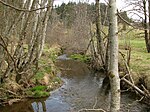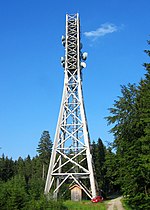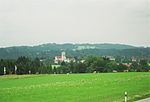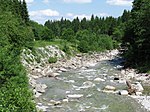Wieskirche
1754 establishments in the Holy Roman Empire18th-century Roman Catholic church buildings in Germany18th-century establishments in BavariaLandmarks in GermanyPilgrimage churches in Germany ... and 6 more
Registered historic buildings and monuments in BavariaRococo architecture in GermanyRoman Catholic churches completed in 1754Roman Catholic churches in BavariaWeilheim-SchongauWorld Heritage Sites in Germany

The Pilgrimage Church of Wies (German: Wieskirche) is an oval Rococo church, designed in the late 1740s by brothers J. B. and Dominikus Zimmermann, the latter of whom lived nearby for the last eleven years of his life. It is located in the foothills of the Alps, in the municipality of Steingaden in the Weilheim-Schongau district, Bavaria, Germany. Because of its outstanding rococo architecture, the Wieskirche was added to the UNESCO World Heritage List in 1983.
Excerpt from the Wikipedia article Wieskirche (License: CC BY-SA 3.0, Authors, Images).Wieskirche
Steingaden (VGem)
Geographical coordinates (GPS) Address Nearby Places Show on map
Geographical coordinates (GPS)
| Latitude | Longitude |
|---|---|
| N 47.681111111111 ° | E 10.9 ° |
Address
9
86989 Steingaden (VGem)
Bavaria, Germany
Open on Google Maps











